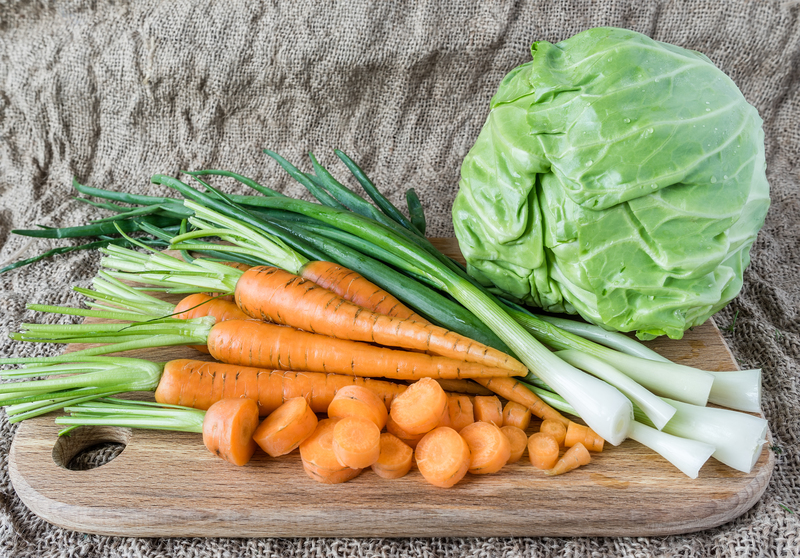Designing a Child-Centric Garden Paradise
Posted on 02/06/2025
Designing a Child-Centric Garden Paradise: Creating Safe, Fun, and Educational Outdoor Spaces
Introduction to Creating a Child-Friendly Garden Paradise
Transforming your outdoor space into a child-centric garden paradise can enhance your child's development, promote creativity, and foster a closer relationship with nature. By putting children's needs, safety, and imagination at the forefront, you nurture their curiosity and encourage endless hours of healthy outdoor play. Whether you have a large yard or a modest space, designing a garden haven for kids is both rewarding and impactful.

Understanding the Principles of Child-Focused Garden Design
To successfully design a garden with children in mind, it's vital to understand their perspective. Children need safe zones, opportunities to explore, and areas tailored to various activities. Below are several core principles to keep in mind when creating a kid's garden paradise:
- Safety First: Ensure the space is free from hazardous materials, toxic plants, and sharp objects.
- Accessibility: Paths and features should be easily reachable for little ones, including those with mobility challenges.
- Engagement: Design elements that encourage hands-on interaction--digging, planting, building, and observing.
- Imagination: Fuel creative play with whimsical touches and storytelling nooks.
- Growth: Include features that grow and evolve with your child's interests and abilities.
The Benefits of a Child-Friendly Garden
An intentional child-centric garden offers much more than just a fun place to play:
- Physical Development: Activities like digging, climbing, and running help build coordination and strength.
- Mental and Emotional Well-Being: Nature reduces stress and sparks joy, leading to happier, healthier children.
- Learning Opportunities: A kid's outdoor paradise doubles as a living classroom--teaching biology, seasons, ecology, and responsibility.
- Social Skills: Shared spaces foster cooperation, sharing, and conflict resolution among siblings and friends.
- Connection to Nature: Caring for plants and observing wildlife instills a lifelong respect for the environment.
Planning Your Kid-Centric Garden Design
Preparation is the key to implementing a lasting and effective garden paradise for children. Start by thinking about the layout, safety measures, and how the garden can evolve with your child's changing interests.
Assessing Your Outdoor Space
Survey your available area and take note of sunlight, shade, wind patterns, existing vegetation, and proximity to the home. Involve your children in this process--they may envision elements you'd never consider!
Setting the Boundaries and Safety Parameters
Security is a top priority when designing gardens for kids. Here's how to set the stage:
- Secure fences and gates: Prevent unsupervised wandering.
- Soften play areas with mulch, rubber, or grass.
- Remove or clearly label toxic plants and substances.
- Ensure tools and chemicals are out of reach.
- Keep sharp edges and hard surfaces to a minimum.
- Maintain clear lines of sight for parental supervision.
Creative Zones and Garden Features For Kids
To craft a truly enchanting garden sanctuary for children, divide your space into distinct but interconnected zones. Each area should cater to different age groups, interests, and play styles.
1. Nature Play Areas
- Sand and Mud Kitchens: Encourage open-ended, sensory play with sand, water, and mud stations. Simple wooden boxes or repurposed basins work well for creative concoctions.
- Loose Parts Gardens: Add logs, rocks, sticks, and natural materials for stacking, building, and imaginative games.
2. Wildlife and Habitat Corners
Create a mini-ecosystem with insect hotels, birdhouses, butterfly-friendly flowers, and small ponds. These features provide educational moments and support local fauna.
3. Edible Gardens for Children
- Designate raised beds or containers for child-friendly vegetable and herb gardens.
- Plant quick-growing crops such as radishes, lettuce, cherry tomatoes, and strawberries for instant rewards.
- Introduce tasting tours and harvesting activities to cultivate healthy eating habits.
4. Creative Expression Spaces
- Outdoor Art Corners: Provide chalkboards, easels, or large rocks for painting, drawing, and sculpture.
- Storytelling Circles: Arrange logs or stumps in a circle under a tree or canopy for reading and storytelling sessions.
5. Adventure and Exploration Paths
Meandering paths of stepping stones, logs, or wood chips invite exploration while developing balance and coordination.
6. Quiet Retreats and Reading Nooks
Designate shaded alcoves with bean bags or hammocks for downtime--a tranquil spot to unwind and observe the world.
Choosing Safe and Stimulating Plants
Selecting the right flora is a cornerstone of child-centric garden design. Prioritize non-toxic, hardy species that can handle the rough and tumble of play.
- Edible Plants: Sunflowers, peas, beans, tomatoes, and berry bushes double as playthings and snacks.
- Sensory Plants: Lamb's ear (soft), lavender (fragrant), snapdragons (interactive), and ornamental grasses (wavering, tactile) engage multiple senses.
- Fast-Growing Flowers: Marigolds, nasturtiums, and zinnias offer bright colors and quick results.
- Shade Providers: Small trees or large shrubs (like willow tunnels) create natural forts and shelters for creative play.
Avoid plants known to be toxic to humans or pets. Always check reputable sources before purchasing or planting new species in your garden for children.
Garden Structures and Play Features That Delight Kids
Beyond plants, child-friendly garden features transform outdoor spaces into places of wonder, movement, and storytelling.
Popular Structures for a Child's Garden Paradise
- Treehouses or Elevated Platforms for imaginative role-play and observation.
- Climbing Frames, Balance Beams, and Slides to build gross motor skills.
- Teepees or Tunnels constructed from willow, bamboo, or fabric for secret hideaways.
- Musical Elements: Hang chimes, drums, or xylophones outdoors for auditory play.
- Swings and Hammocks nestled among sturdy trees or free-standing supports.
- Pebble or Mosaic Pathways stimulating movement and discovery.
Encouraging Learning Through Gardening
An educational kid's garden goes beyond basic play. Foster curiosity and responsibility by involving children in:
- Sowing seeds and tracking growth (use journals or apps to monitor progress)
- Composting food scraps and observing the decomposition process
- Learning about seasonal changes, weather patterns, and the water cycle
- Identifying and cataloging backyard flora and fauna
- Building simple outdoor experiments, such as sun dials or bug habitats
Making the Garden Accessible for All Abilities
A truly inclusive garden paradise for children ensures that every child can participate, regardless of ability. Key tips include:
- Wide, level paths for wheelchairs, strollers, and easy foot traffic
- Raised beds and table planters for at-height gardening
- Auditory, tactile, and scented plant choices for sensory deficits
- Visual cues, bold colors, and simple signage for wayfinding
Maintaining a Child-Centric Garden: Safety and Sustainability
Ongoing Safety Checks
- Regularly inspect structures and play equipment for stability and splinters
- Prune plants and clear paths to avoid overgrowth
- Monitor for harmful insects, fungi, or animals
- Ensure adequate shade, hydration, and sun protection
Sustainable Practices for Children's Outdoor Gardens
Teaching environmental responsibility can be woven into your garden's fabric:
- Use organic fertilizers and natural pest deterrents
- Harvest rainwater for irrigation
- Install solar lights for energy efficiency
- Create compost bins to reuse kitchen and yard waste
These measures not only protect children but also model environmental stewardship.

Involving Children in Garden Design and Upkeep
A child's sense of ownership over the garden will grow if they help design, build, and maintain it. Ideas include:
- Let children choose plant varieties and paint plant markers
- Invite them to design paths, name structures, or help assemble raised beds
- Assign weekly 'garden jobs' suited to their age
- Celebrate seasons with plantings or garden parties
Conclusion: Cultivating a Legacy of Joy in a Kids' Garden Paradise
A child-centric garden paradise sparks excitement, growth, and a love for the natural world. With careful planning, creative adjustment, and ongoing family involvement, your outdoor area becomes a cherished haven for learning, adventure, and lifelong memories. The benefits extend far beyond childhood--creating a vibrant, resilient, and connected family space for generations.
Begin your journey today and watch as your child-friendly garden paradise grows into a place where imagination flourishes and every day brings new discoveries!
Frequently Asked Questions About Designing Child Gardens
1. What are the essential safety tips for children's gardens?- Choose non-toxic plants
- Maintain fences and secure boundaries
- Soften hard surfaces around play areas
- Supervise children, especially around water features
- Strawberries
- Snap peas and sweet corn
- Cherry tomatoes
- Sunflowers
- Basil and mint
- Use vertical planters for space efficiency
- Create mini fairy or dinosaur gardens in containers
- Install chalkboards or outdoor art panels on fences
- Choose compact, multi-use play structures
- It enhances physical coordination
- Encourages responsibility and patience
- Boosts observation and scientific thinking
- Promotes relaxation and stress relief
Start Creating Your Child-Centric Outdoor Paradise Today!
Designing a child-centric garden paradise is an evolving adventure--a project you can tailor year after year to reflect your child's blossoming passions. Embrace creativity, prioritize safety, foster learning, and turn your green space into a vibrant sanctuary for the little ones in your life.

